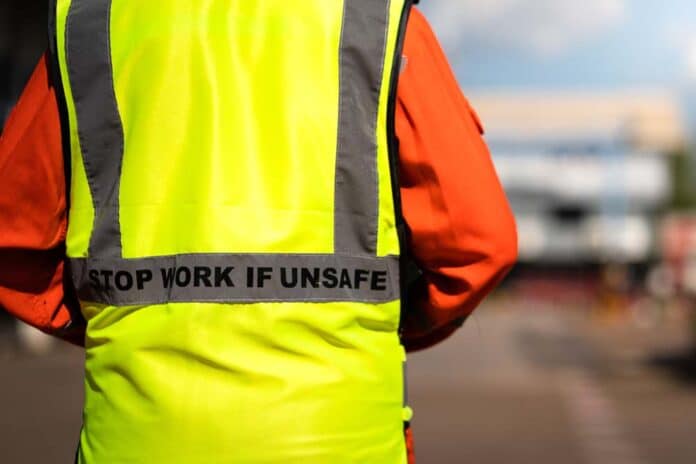The OPC uses its three decades of industry expertise to discuss why safety incidents can happen at the trackside. They’ve a special interest in Human Factors and experience and expertise in why rail workers make errors and have safety incidents.
Ensuring track worker safety is of ‘critical concern’ for our industry. Although, thankfully, fatalities are very uncommon occurrences, there are still too many ‘near misses’ happening that leads the OPC to believe still more could be done to improve the safety of our track workers.
In a previous news story, the OPC shared the importance of Non-Technical Skills (NTS) for track workers and the benefits of a Post incident Assessment (PIA) to uncover NTS shortfalls and strengths. In this article we share another PIA for some track workers and explore a number of safety culture improvements.
Track worker Safety Culture learnings – a PIA case study
Some of the facts in the case study below have been changed to protect those in involved.
In a recent PIA completed with some contracted track workers, two team members were asked to set up possession boards and detonators for an unfamiliar piece of track. It was a night job on a piece of complicated track with multiple lines and signal points. Both track workers reported they had to detour to the office to receive their safety briefing. One had some distance to travel and was delayed in traffic, so arrived feeling stressed and anxious.
Whilst receiving the safety briefing for the planned job, they were also given a second task to complete in a nearby location – so, they were now doing the work of two groups rather than one. This was additional unplanned work. The track workers felt unable to challenge the additional job, being on zero hours contracts, and they were concerned they may not be called on for more work in the future.
It was a long, 30-minute walk on the track to the possession. They arrived tired from carrying heavy equipment. Whilst walking, the COSS had received repeated phone calls asking if they’d done the work yet. He reported feeling ‘hassled’, tired and under pressure.
On arrival at the first set of points, the tracks were complex and confusing. Without a thorough check of the map and safety briefing, they set up the first possession board and detonators in the assumed points location, but in the wrong place. They received a further phone call; again, asking if the job was completed yet. They started to walk up the line to the other points location. The second track worker had difficulty locating the second set of points, but after checking with each other (but not the paperwork), they set up the final boards and detonators. Under pressure to complete the additional job, they moved on without a thorough check of the first task. Whilst resting momentarily in the cess, they saw train headlights coming towards them. Fortunately, the train turned, but there was a loud bang as a detonator went off. The possession boards and detonators had been set up in the wrong place. The track workers had also been in the wrong location and so were working on live rails and open lines. This incident was a serious near miss.
Key Safety Culture Learnings
Effective planning, knowledge and prioritisation
It’s important that any work we ask employees to do is fundamentally and primarily safe and then productive. A contributing factor in this safety incident was the number of jobs allocated to complete in the same, given time. Adding a second job onto a two-person crew instead of getting another gang contracted in, created severe safety risks for the individuals. Furthermore, any employee or contractor should feel able to challenge if productivity is being given a higher priority over the safety of workers on site.
Undue pressure to complete work
In this PIA, both employees reported feeling under undue pressure to finish the work, driven by numerous phone calls asking if it was set up/completed yet. This ‘chasing’ may have contributed to a lack of checking of the detonator placement and the task not being double-checked before moving on to the second job.
Creating an open safety culture
We need an organisational culture where employees feel able to challenge decisions and to ‘push back’ when things feel unsafe, or they feel at risk. Organisations need to encourage this challenge for a safer culture by affirming that employees and contractors can question things and when they do ‘push back’ on a safety issue, to celebrate the fact. It’s also crucial that a track worker of any seniority has the option to say that work is unsafe and that it should stop immediately. ‘Whistle-blowing’ should be seen as a positive. In this PIA both track workers were contractors. They felt unable to challenge the work for fear of reprisals and lost future work opportunities.
Managers with strong safety leadership skills
Good safety leadership will involve those in managerial roles prioritising their staff’s and contractor’s safety over productivity. In the OPC’s experience, a really effective safety leader is one who cares about their staff’s wellbeing; who sees themselves as ‘servant-leaders’ supporting their employees and ensuring their protection and safety.
Dr Stephen Fletcher, Director and Occupational Psychologist finished up by saying: “As an industry, we need to exert and invest more focus, time and effort in our track worker’s safety. They are as much at risk as any other rail safety critical roles, if not more so. We need to address this as an industry. Every employee and contractor on our rail network matters. There are lots of initiatives and learnings already available that can help improve safety culture and keep our track employees safe on the network”
If you would like to know more about the OPC’s initiatives to help improve safety culture or track worker safety, then contact us at admin@theopc.co.uk or call +44 (0)1923 23 46 46.

To read last week’s in-depth feature from the OPC about track worker safety, click here.



































 0113 2082620
0113 2082620 info@railbusinessdaily.com
info@railbusinessdaily.com 15 Mariner Court, Wakefield WF4 3FL
15 Mariner Court, Wakefield WF4 3FL

